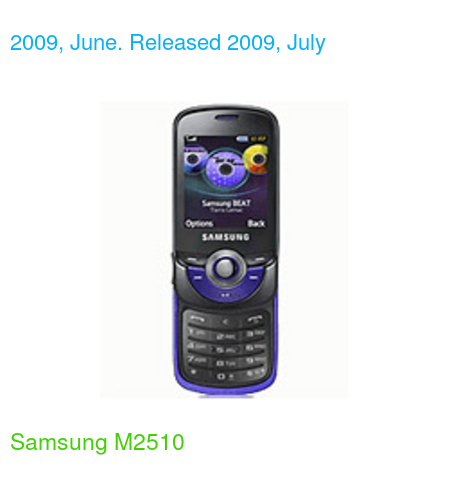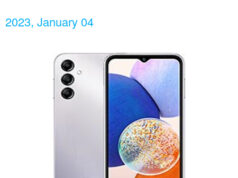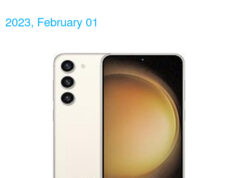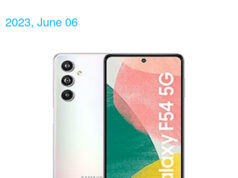| NETWORK | Technology GSM |
| Weight | 90.5 g (3.17 oz) |
| SIM | Mini-SIM |
| DISPLAY | Type TFT, 256K colors |
| Size | 2.2 inches, 15.2 cm2 (~32.9% screen-to-body ratio) |
| Resolution | 176 x 220 pixels (~128 ppi density) |
| MEMORY | Card slot microSDHC (dedicated slot) |
| Phonebook | 1000 contacts, Photo call |
| Call records | Yes |
| Internal | 15MB |
| MAIN CAMERA | Single 1.3 MP |
| Video | Yes |
| SELFIE CAMERA | No |
| SOUND | Loudspeaker Yes 3.5mm jack Yes Dedicated music keys |
| COMMS | WLAN No Bluetooth 2.0, A2DP Positioning No Radio Stereo FM radio, RDS, recording USB microUSB 2.0 |
| FEATURES | Sensors Messaging SMS, MMS, Email Browser WAP 2.0/xHTML Games Yes + downloadable Java Yes, MIDP 2.0 Auto EQ automatic equalizer Find Music recognition service MP3/e-AAC+/WMA player MP4/3GP player Organizer Mobile Tracker Voice memo Predictive text input |
| BATTERY | Type Removable Li-Ion 800 mAh battery |
| MISC | Colors Blue |
Specifications data description of this 📱Samsung M2510📱
Title: Unleashing the Power of Yesterday: A Blast from the Past with the Classic Device Specifications
Introduction:
In the ever-evolving world of technology, it’s always fun to take a trip down memory lane and revisit the specifications of classic devices that have shaped the way we use and interact with mobile phones today. This blog post will take a deep dive into the specifications of a classic device that boasts an array of features that were considered cutting-edge during its prime. So, let’s get started!
Lineup:
The classic device we’ll be looking at today is a perfect example of a phone that offered a little bit of everything, making it a popular choice among users. With its sleek design and impressive range of features, this device was a force to be reckoned with in its time.
Design:
The classic device sports a compact design, making it easy to carry around and use comfortably. Its compact form factor, combined with its sturdy construction, makes it a reliable companion for everyday use.
Specifications:
🌐 Network, LAUNCH📅: This classic device supports the GSM technology, marking its entry in the world of mobile communication.
BODY🏋️: The device has a weight of 90.5 g (3.17 oz), making it lightweight and easy to handle. Its Mini-SIM card slot ensures compatibility with a wide range of carriers.
🌈 Display🤖: The device features a TFT display with 256K colors, offering vibrant visuals and smooth graphics. Its 2.2 inches, 15.2 cm2 (~32.9% screen-to-body ratio) screen real estate provides ample space for visuals and text.
🛠️ OS 📶: The device operates on a non-smartphone OS, which was the norm during its time.
🚀 Chipset 🔧: The device features a chipset that provided reliable performance and efficient power consumption during its heyday.
💪 CPU 🖥️: The device’s CPU was designed to handle the basic processing needs of its time with ease.
🎮 GPU 💻: The device’s graphics processor delivered smooth visuals and graphics that were suitable for its time.
🧠 MEMORY 🗂️: The device offered a phonebook capacity of 1000 contacts and internal memory of 15MB, which was expandable with a microSDHC card.
📷 CAMERA 🎥: The device featured a single 1.3 MP camera that enabled users to capture decent-quality photos and record videos.
🔈 SOUND 🎵: The device had a loudspeaker, a 3.5mm jack, and dedicated music keys, allowing users to enjoy music on the go.
📡 COMMS 📶: The device supported Bluetooth 2.0, microUSB 2.0, and a WAP 2.0/xHTML browser for connecting and sharing content with other devices.
💡 FEATURES 🎁: The device boasted an array of features, such as an MP3/e-AAC+/WMA player, MP4/3GP player, voice memo, and Mobile Tracker, making it a versatile device.
🔋 BATTERY🔌: The device packed a removable Li-Ion 800 mAh battery, offering a decent battery life.
Conclusion:
Reliving the specifications of this classic device reminds us of how far mobile technology has come in a short span of time. While the specifications of this device may seem modest compared to today’s standards, it was once a groundbreaking piece of technology that transformed the way people communicated and interacted with one another.
We invite you to leave a comment and share your memories of using this classic device or any other classic devices you’ve used in the past. Let’s celebrate the evolution of technology together!







